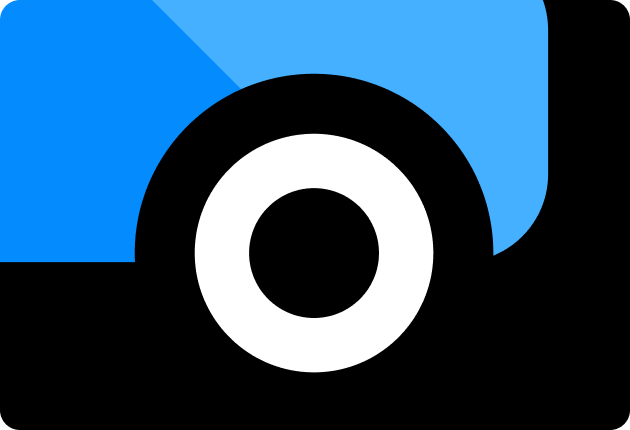
29 Tips & Tricks For Dashers: Taxes, Apps, and More [2024]
Last Updated on 2024-01-05
The information provided in this post is for informational purposes only and should not be construed as tax or insurance advice. The content contains general information and may not reflect current legal developments or insurance changes. Any reader should consult with a l professional to obtain insurance advice tailored to their specific circumstances.
With the right set of DoorDash tips and tricks, both newcomer and veteran Dashers should be able to optimize their experience, maximize earnings, and deliver impeccable service.
If, for example, you’re just dipping your toes into the DoorDash waters, your biggest priorities should be:
- Mastering the DoorDash app: Get comfortable with its interface and functionalities. A smooth app experience can substantially speed up your delivery process.
- Polishing up customer service: Always be polite, punctual, and accurate. A happy customer often translates to better tips.
- Managing tax liabilities: As a Dasher, you're essentially your own boss. Be proactive in setting aside funds for taxes and diligent in tracking deductible expenses.
Then for Dashers who've been cruising the streets for a while, your focus should be:
- Capitalizing on peak hours: Pinpoint and target high-demand delivery times in your locale. While lunch and dinner hours are typically busy, weekends, holidays, and local events can also record a surge in demand.
- Building a stellar Dasher rating: Aim for a rating of 4.7 or above by regularly checking customer feedback and addressing any recurring issues. Such an exclusive rank will not only boost perception with customers but also open doors to premium delivery opportunities.
- Selecting the best-paying orders: Even though you may feel tempted to accept every delivery offer, sometimes it's more strategic to decline the low-paying ones. You always can use the order preview insights to decide if a delivery is worth your time. According to DoorDasher Michael Vaness, you should be careful not decline too many orders within a short time. This will lower your acceptance rating, thereby affecting the volume of offerings coming your way.
And with that, here are 30+ other DoorDash strategies that will set you on the path to success:
Taxes
#1. Understand your obligations as an independent contractor
As an independent contractor with DoorDash, you're not considered an employee.
This status requires you to manage both income tax, which you might be familiar with, and self-employment tax, which is an additional tax that only applies to independent contractors (and other businesses). The rates for the former start at 12%, while the latter takes up 15.3% of your net earnings.
#2. Keep records of all your activities and expenses
Every delivery, every tip, and every expense should be documented. This simplifies the DoorDash tax filing process and ensures you don’t miss out on any deductions that you're entitled to.
Consider even using apps or digital tools to track earnings and expenses in real time. That alone could save you hours of backtracking and potential errors during tax season.
#3. Seek expertise when needed
If you have uncertainties regarding the tax process, consult a tax professional for guidance. They’ll review your situation and help you to comply with all IRS regulations, as well as maximize deductions.
#4. Take advantage of tax management software
You could also leverage one of many advanced tax software that are built specifically for independent contractors. They have the tools to streamline the entire DoorDash tax process, including income reporting, deductions, and even quarterly tax payments.
Some popular options include:
- TurboTax Self-Employed: Offers real-time insights into your tax obligations and potential deductions.
- QuickBooks Self-Employed: Helps track income, expenses, and mileage. It also integrates seamlessly with TurboTax to make the tax filing process even easier.
- Stride Tax: Monitors expenses and mileage in real-time while providing a clear view of possible deductions.
#5. Take optimal deductions on your taxes
When it comes to filing vehicle deductions, DoorDashers have to choose between the Standard Mileage and Actual Expenses methods.
The Standard Mileage method is simpler, allowing businesses to deduct 67 cents per mile driven as of 2024. This rate covers all vehicle-related expenses – from gas to general wear and tear.
The Actual Expenses method, on the other hand, requires you to itemize every vehicle-related expense – including fuel, maintenance, insurance, and registration fees. It's more detailed and especially suitable for DoorDashers who have higher-than-average vehicle expenses.
You can’t, however, claim both standard mileage and actual expenses in the same tax year. That would be double-dipping, and it could raise red flags with the IRS – potentially leading to audits and penalties.
#6. Set aside money in place of tax withholdings
Unlike salaried employees, Dashers receive their earnings without any tax withholdings. This automatically compels you to proactively set aside funds for your tax obligations when they come due.
You can start by:
- Calculating your projected annual earnings: Estimate your yearly income based on your average DoorDash earnings. Then with the figures, determine your tax liability for both income and self-employment taxes.
- Determining your tax bracket: Identify the federal tax bracket for your projected earnings.
- Factoring in the state taxes: If your state imposes an income tax, incorporate this into your estimates.
Then to build your tax savings:
- Work out a percentage: If your calculations suggest you'll owe 25% of your earnings in taxes, set this amount aside from every paycheck. Michael even goes above his worked out percentage as a buffer. For instance, if $200 is the monthly baseline, he makes it $250 to stay ahead of the tax obligations.
- Open a dedicated bank account: To avoid accidentally spending your tax savings, consider opening a bank account solely for this purpose.
- Set regular reminders: Have regular reminders for transferring a portion of your DoorDash earnings to the tax savings account.
#7. Pay quarterly DoorDash taxes to avoid IRS penalties
The IRS expects you to pay taxes on your income quarterly, rather than settling the entire bill in April.
The document for the job is Form 1040-ES, “Estimated Tax for Individuals”. It provides a comprehensive worksheet for guiding your calculations, as well as payment vouchers for anyone who chooses to pay by check.
Many independent contractors, however, prefer the Electronic Federal Tax Payment System (EFTPS) – as it facilitates online payments directly from your bank account.
If you don’t pay this quarterly, and you owe money at the end of the year, the IRS will additionally charge you a penalty for underpaying your estimates.
Health insurance
Dashers are not traditional employees, so you need to figure out your own health insurance.
#8. Leverage the Stride and DoorDash Partnership
DoorDash partners with Stride, a broker that connects independent workers to a curated marketplace of health insurance policies – all from established providers.
The platform is built on advanced algorithms that factor in individual preferences, health needs, and budget constraints to recommend appropriate insurance options to Dashers.
#9. Choose the right health plan
We’d recommend evaluating the many health insurance options based on coverage limits, out-of-pocket expenses, and network restrictions.
You should also seek a plan that offers a balance between affordability and comprehensive coverage.
Stride's advisors will even be on standby to help you through this entire decision-making process.
#10. Capitalize on the California Health Stipend
Eligible Dashers in California are entitled to a health stipend courtesy of Proposition 22, a legislation that seeks to offset the costs of personal healthcare plans. The stipend is provided quarterly and is based on the average active hours that a Dasher has worked per week.
You also need to be enrolled in a health plan that meets the ACA's minimum essential coverage standards and isn't funded by an employer or the government.
Referral bonuses
As a Dasher, you're provided with a unique referral code to share with prospective applicants. Every single time a new driver signs up with it and completes a specified number of deliveries within a set timeframe, you automatically earn a bonus.
Whereas the exact amount can vary based on your location, you should be able to grow the bonuses by following these DoorDash driver tips and tricks:
#11. Understand and comply with the referral program's terms and conditions
DoorDash has specific criteria that the referred driver must meet for the bonus to be awarded. This often includes completing a set number of deliveries within a stipulated timeframe.
For instance, the referred driver might need to complete 200 deliveries within 60 days for the bonus to activate.
Being transparent with your referees about these conditions accelerates the DoorDash benefits for both parties.
#12. Monitor Your Referral Bonuses
The 'Earnings' section of the DoorDash app has a dedicated area for referral bonuses. It reveals their delivery count and highlights when you can expect your bonus.
Maximizing benefits and rewards
DoorDash presents a range of opportunities to enhance your earnings and delivery experience. We’d particularly suggest you to consider the following:
#13. Review customer feedback
The Top Dasher status offers priority access to delivery slots. And to attain it, you need a customer rating above 4.7 and an acceptance rate over 70%.
You can start by using the feedback section in the app to understand the reasons behind any less-than-perfect ratings. Addressing those specific issues will then help you to improve your overall score.
#14. Analyze Peak Pay patterns
DoorDash occasionally activates its highly-rewarding Peak Pay program during periods of increased demand, when the order volume is substantially higher than Dasher availability.
To keep up with it, you should study the activation patterns very closely. With time, you might observe that Peak Pay often coincides with local events or specific meal times. You can then adjust your availability accordingly.
Michael agrees, insisting “If you can accurately forecast the peak days/time slots and preschedule yourself around these times, you can make the most money and you may only have to work a few days a week.”
#15. Use route optimization apps to complete challenges
DoorDash occasionally rolls out challenges from time to time, which offer bonuses up to those who fulfill the specified delivery targets.
This is where you bring in route optimization tools to supplement the Dasher app, and subsequently help in identifying the most efficient paths for multiple deliveries.
Examples include Elite Extra, Routific, and Route4Me.
Ryan Shaw, a Dasher with over three years’ experience, clarifies that DoorDash itself will optimize the route for you (to an extent) when it comes to performing multiple deliveries together.
He states, “I recently had a stack of 5 orders, 4 of which were from Petco, and 1 from Petsmart. Instead of having me pickup from both stores and then deliver, the app had me pickup the Petco orders, deliver to 2 customers that were between Petco and Petsmart, then pickup from Petsmart and finish the remaining deliveries.”
Earn more tips
While the act of tipping is subjective and varies from one customer to another, Dashers can employ various strategies to positively influence the decision:
#16. Be punctual and responsive
You can utilize route optimization tools and monitor real-time traffic updates to circumvent delays. And whenever a delay is inevitable, promptly inform the customer. Having pre-set messages for common scenarios may also help to expedite the communication.
#17. Keep orders in insulated bags
Use insulated bags to preserve the meal's temperature and presentation. Delivering an order that's both hot and intact proves your commitment to quality service.
This, according to Michael, is especially critical for orders that contain things like pizzas. He explains pizza deliveries “pay the most”, and that they usually go to Dashers who’ve proven that they consistently use well- insulated delivery bags.
#18. Target peak meal times
Lunch (11 am - 1 pm) and dinner (6 pm - 8 pm) are peak times when the demand for orders is highest. While the resultant urgency can be challenging, it comes with opportunities for higher earnings. Customers themselves tend to be more generous, especially if their food arrives promptly and in good condition.
#19. Understand the tipping patterns
The DoorDash app provides a breakdown of all your earnings, including tips. By regularly reviewing this data, Dashers can identify patterns or specific delivery types that yield better tips.
For instance, you may notice that large orders to business addresses consistently post higher tips.
Ryan himself observed that tips tend to be higher during events. “For example Sundays during football season, particularly when the local team is playing, have been pretty good compared to let's say a typical weekday.”
#20. Personalize the delivery experience
Even when you’re in a rush, don’t forget to add a personal touch to your deliveries. Addressing customers by name, meeting special requests, or even placing a "thank you" sticker on the package can greatly influence their willingness to tip.
“And don't forget that customers can add an extra tip even after the order is delivered,” advises Ryan. “It doesn't happen very often, but if you handle your orders well, communicate with customers accordingly, you're eventually going to get one who's willing to show extra appreciation.”
How to decide on whether to accept a DoorDash delivery offer
To pick the most profitable DoorDash delivery offers:
#21. Compare distance against the payout
When an offer pops up, it provides information on the payout and the total delivery distance. You can use that to establish if the order is worth the time and effort.
Consider, for instance, the wear and tear on your vehicle for every mile driven. The IRS standard mileage rate can be a helpful benchmark for calculating the effective cost per mile of driving your car.
You should also factor in the route's complexity. Shorter routes with multiple stops tend to take longer than direct, longer routes.
Ryan adds that you ought to additionally consider where you’ll end up once upon completing the delivery. “Sometimes drivers find themselves way outside their zones or in areas that are not busy, and have to drive all the way back to get more orders.”
#22. Take into account the restaurant wait times
Different restaurants have varying preparation times. To reduce your waiting time, keep a log of your experiences at various establishments. The resultant dataset could then guide your decisions over time.
#23. Balance between quantity and quality
To find a good balance between the number and quality of orders, track the average payout, distance, and time spent on each delivery. You should then use this data to calculate your hourly earnings and identify the most profitable types of deliveries.
In densely populated urban areas, for example, multiple short-distance deliveries could be more profitable – while in suburban areas, fewer high-payout deliveries might be optimal.
#24. Pull analytics from third-party apps
The gig economy has given rise to a suite of third-party apps that help Dashers maximize their earnings. Para is one example, and it’s capable of analyzing offers in real time based on factors like distance, payout, and even historical data on restaurant wait times.
You can always cross-check their recommendations with your personal experience. Plus, remember to adjust the app settings to match your strategy and shifts in consumer preferences.
Things NOT to do
#25. Misusing the Red Card
The DoorDash Red Card is a special credit card given to Dashers to pay for orders at certain restaurants. Using this card for personal expenses or outside DoorDash's network is forbidden. Any misuse is easily traceable through the transaction records and may result in immediate deactivation.
#26. Manipulating the Acceptance Rate
While you might be tempted to raise your acceptance rate by accepting all orders and then dropping the undesired ones, DoorDash's system closely monitors order handling around the clock. Frequently unassigning orders post-acceptance could get your account flagged for potential misuse.
#27. Neglecting communication with customers
Failing to keep customers in the loop, particularly during delays, can negatively impact both your ratings and DoorDash's reputation.
#28. Relying on automation tools
Relying on third-party automation tools, like bots or scripts, to manage deliveries can cause system glitches. DoorDash prohibits such tricks, and its tech team continually updates the app to detect and block them.
Take the initiative
#29. Start now
If you’re not already a Dasher, the last tip is the obvious one! Sign up today to unlock this income stream for yourself (pending Dasher approval and local availability).



